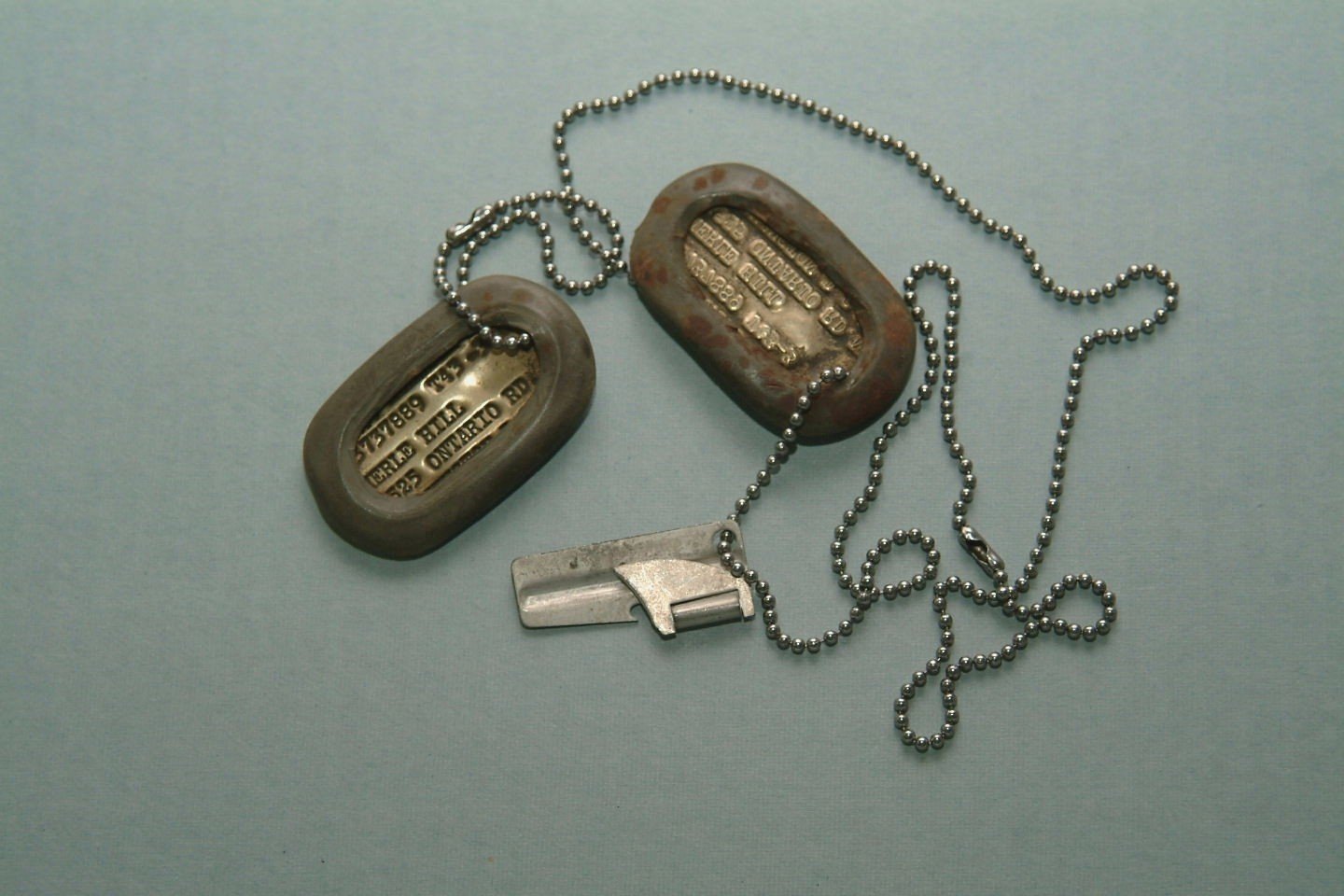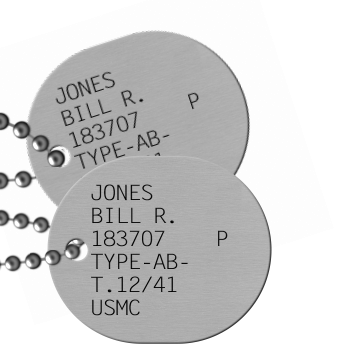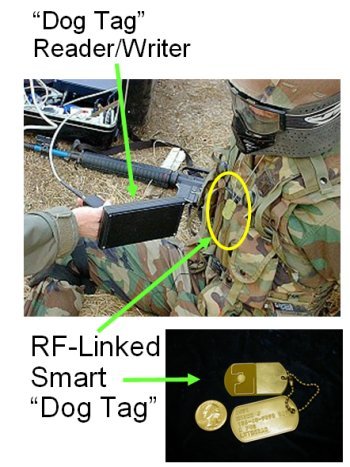Military dog tags have been around since the Civil War and are an essential part of the military today. For over 150 years, soldiers’ dog tags have been used to identify those in the military and provide them with important information. Those in the military must understand their history and recognize how far these tiny pieces of metal have come.

Military Dog Tags
Military dog tags are an essential part of every service member’s wardrobe. As a symbol of identity and service, military dog tags provide crucial information about the wearer in an emergency. Not only do they offer a vital identification tool for troops, but they also help identify battlefield casualties.

Dog tags come with two stainless steel plates connected by a chain or cord around the neck or wrist. The first plate includes basic identifying information such as name, rank, Social Security number, blood type, and religion. In contrast, the second plate notes contact information in case of emergency. When they enter active duty, dog tags are issued to soldiers and must be worn on or off duty at all times.
Pre-World War I: Origin of Dog Tags
The origin of military dog tags can be traced back to the Prussian Army in the late 1800s, just before World War I. During that time, each soldier was issued a metal identification disc containing personal information such as name, rank, and serial number. These discs were worn around the neck on a string or chain so they could easily be identified if they became injured or killed in combat. By 1914, most major world powers had adopted this practice, quickly spreading throughout Europe and North America during World War I.

In addition to providing quick identification, military dog tags also served an essential purpose on the battlefield: they allowed commanders to keep track of troop numbers more efficiently than before. In particular, British troops would use two metal discs for each soldier – one for their uniform and one for their kit bag – allowing them to quickly count how many men were on duty at any time during battle. This method proved so successful that it is still practiced today by many modern militaries worldwide.
World War I: Modernization of Dog Tags
The introduction of dog tags during World War I was essential in modernizing military identification. Before this, soldiers carried identity discs as a form of recognition made of metal such as brass or copper and featured their names and serial numbers. However, these discs could easily break, and attaching them securely to uniforms wasn’t easy. This changed when the U.S. Army introduced a two-piece dog tag system during World War I, consisting of a metal disc and chain with engraved information. This allowed for easier identification, particularly in cases where soldiers had died in battle or become prisoners of war.

The tag also included essential medical information such as blood type, religion, and allergies that could be used by medical personnel if needed. This simple but effective system became part of the standard military issues for all branches and is still used today with only minor changes, such as adding bar codes for tracking purposes.
World War II: Expansion of Use

During World War II, dog tags expanded beyond just medical identification. They became a way for soldiers to store and carry personal information. This included their name, rank, serial number, blood type, and religious preference. Dog tags were also used to identify when troops were assigned to ships or sent overseas since they had no other way to prove who they were. The tags also served as an instant reminder of their duty in case they forgot it during the chaos of war.
In addition, dog tags could be used to locate soldiers if they died or went missing. This identification method ensured that family members would receive notification if anything happened while their soldier was away fighting for his country.
Vietnam War: Changes to Design

The Vietnam War saw the introduction of new designs for military dog tags. The standard design before this war was a flat metal tag with two holes at the top and two lines of text containing name, rank, service number, and religious preference. During the Vietnam War, it was decided that soldiers needed more information on their tags in case they were captured or killed in action. To accommodate this need, the size of each tag increased from 1 inch by 1 inch to 2 inches. The newly designed tags included additional lines such as blood type, Social Security Number, and sometimes even organ donor status. Also, during this time, plastic was used instead of metal for dog tags due to its low cost and lightweight properties, which made them easier to carry around on long missions.
Finally, an adhesive backing was added to ensure the tags stayed secure in the field. All these changes helped ensure greater identification accuracy if a soldier perished during battle or became a prisoner of war.
Modern Era: Technology Upgrades
The modern era of dog tags has seen a major technological upgrade compared to traditional, stamped metal tags. These new tags are typically constructed from rugged plastic and feature advanced features such as laser-engraving and embedded RFID chips.

Laser-engraved dog tags provide highly detailed information that can be read easily in any light or environment without wasting time. The embedded RFID chips allow for instant identification of service members and contain all of the same information as is printed on their tag. They also grant access to more detailed medical information stored in separate databases.
In addition, these RFID chips can be linked to location tracking systems so personnel can always be located should they become lost or injured during operations. This technology has allowed militaries worldwide to better track their personnel, giving them an extra layer of safety and security on the battlefield.
Unique Uses for Dog Tags
Dog tags are essential to military identification but also serve other purposes. Dog tags first appeared in the early 19th century during the Napoleonic Wars. Since then, they have been used to identify and track personnel in all military branches. In addition to their intended purpose, dog tags have been used for various other tasks.
Some soldiers have used dog tags as personal decorations or talismans for luck on the battlefield. Personalized messages such as important contact information can be written on them for identification if a soldier is wounded or killed in action. Soldiers may also choose to engrave mottos and meaningful quotes within their tag set, which can remind them of their mission and why they serve when times get tough.
Dog tags can also be collected as souvenirs by former members of the military or those who served alongside them, a reminder that will never rust or fade away. Some soldiers even attach items such as medals or charms to their dog tags before retirement, making it a functional and sentimental piece at once!
Conclusion: Impact on Military Culture

The use of military dog tags has had a profound impact on military culture. The tags remind us that those who serve are more than just soldiers but part of an important legacy of service and sacrifice. This legacy is passed from one generation to the next and helps to create a sense of community within the armed forces. It also serves as a symbol of honor and pride for those who have done this in the past and present. The presence of dog tags on personnel can also help to boost morale, showing others that they are respected and valued members of their unit or organization.
Lastly, it serves as an essential source of information for survivors in times of conflict or tragedy, providing vital details about the individual such as name, rank, religion, blood type, etc.
In conclusion, dog tags have continued to be an integral part of military culture throughout history, with far-reaching implications regarding personal identity and collective pride among service members worldwide.












GIPHY App Key not set. Please check settings